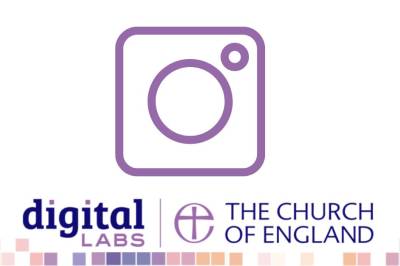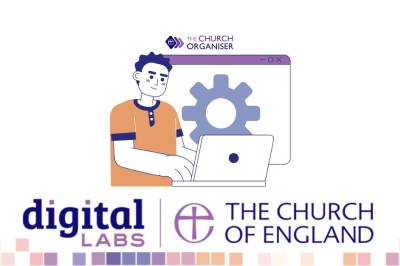But, before we go ahead and use an image or video online, we need to understand a little more about consent, GDPR and stock imagery.
Who owns an image?
Before we answer your questions on this topic, let's start by defining who owns an image.
Gov.uk tells us:
The person who creates an image (“the creator”) will generally be the first owner of the copyright.
And here:
Photographs, illustrations and other images will generally be protected by copyright as artistic works. This means that a user will usually need the permission of the copyright owner(s) if they want to perform certain acts, such as copying the image or sharing it on the internet.
So, the creator of an image or video is the owner, therefore holds the copyright. Read Gov.uk advice and guidance to understand this further.
In this blog, we hope to answer some of your questions on how to use images and video, and help you avoid unintentionally misusing someone else’s work.
Photos and video owned by you
Taking your own photos or videos to use online will present an authentic view of your community, and may help some feel more confident to come along knowing what to expect.
As you’ve created the images yourself, you are the owner, and you are free to use them as you wish, however, you must be aware of GDPR and the implications for anyone appearing in the images or video.
Consent, Data Protection and UK/EU GDPR
If no one from your congregation will be identifiable during filming or photography then you don’t need to gain consent. However, if members of the congregation will be visible, consider the following:
- Data Protection and UK/EU GDPR permissions for adults: Those appearing in film or photography will need to have given consent, as religion is a protected feature under Data Protection and UK/EU GDPR. A photo release form can be signed by adults and must include all the places that the photo or video may be used by the church. Regular attendees at the church need to only sign this once but it should be refreshed regularly, such as every three years. However, new visitors should be asked before the service or event begins.
- Data Protection and UK/EU GDPR permissions for children: Videos containing children (under the age of 16) may be used by the church if consent has been given by their parent or guardian, following the same guidelines as above. If permission has not been given, it can be helpful to identify these children by using a simple paper wristband, or by asking them to sit in the photo and video free zone.
- Prepare ahead for filming in your church building: Tell your community your plans for filming and send out the photo release forms to your email list, WhatsApp groups, or Facebook groups – anywhere your community can see it - so they are ready. Have spare copies with you on the day for anyone who has not yet signed. Remember, your regular attendees only need to sign this once every three years.
- Create photo and video free zones: Those who do not give consent to be in a video or photo do not need to sign the consent form. Create a safe space within your church building where they may sit. This could be a side aisle, or a few rows at the back. Simple signs will help identify where this space is, and make sure that those who are filming or taking photos are aware. At the beginning of the service, remind people and give them opportunity to move.
- Update your privacy policy: Include this paragraph in your privacy policy and display it somewhere with your church building and on your website so that it can be read before the consent form is signed.
- Remember, consent can be withdrawn, resulting in deleting videos or images of that person. It is more likely that a church would experience members of their community not giving consent than withdrawing it later, however it is wise to be prepared for this to happen. The process of withdrawing consent must be as easy as providing consent.
- Read the Safer Environments for Churches guidance from the National Safeguarding Team which covers more on GDPR and safeguarding for children and vulnerable adults.
- Do seek advice and guidance on data protection issues from your Diocesan Protection Team who can be contacted through your local Diocese office.
How to use stock photos and video
There are times where you may not have the right photo to compliment a social media post or to use as part of your next live service – stock photography is the answer. Before you head off to your search engine of choice and download a photo, follow these guides to ensure you won't infringe on copyright laws.
Can I use any image or video found on online?
The simple answer is no.
Searching Google Images will throw up an infinite number of images, sourced from all over the web. Many will be subject to copyright, may have been uploaded without the photographers knowledge or consent, or taken from paid stock photography sites without permission. Without knowing, you may use an un-licenced image and could be sent a costly invoice – this does happen. Quite simply, don’t use images or video that you have not been given permission to use.
How to check you do have permission to use a photo or video found online
Before you download an image, check the website has included information on how the images are licenced so that you can use with confidence. Stock photography website Unsplash details how the images are licenced, and show a good example of what you should look for before downloading an image or video. Further down this page we have included links to a range of trusted stock photography sites.
Learn more about image rights and usage.
What about images on social media?
The same applies to social media. Your church account may have been tagged in a post, but before downloading the image or video to share, make sure you have consent - ask in the comments or send a direct message. The creator may be happy for you to share - as long as you’ve asked first and credit them as the owner in your caption.
An example of how to credit the owner of an image can be seen below in a recent Church of England Instagram post.
What if the image features our church building?
You may have spotted a beautiful photo taken by a local photographer of your church building during the golden hour, which will look perfect on your website. It is your church building and surely this means you can use it? Unfortunately, no, the image is still the property of the person who created it. Send an email or direct message to ask first. They may be happy for you to use it for free, or they may ask for a fee - either way, make sure you’ve sought consent first.
So, where can I go to find stock images online?
There are several websites where you can download free stock images and video. These sites will have gained consent from the creators, and the licence information will be clear on the website, so you can be confident you are not breaking any rules.
Here are some of our favourites:
Looking for more free church resources? Discover 31 amazing tools and resources for churches in this Digital Labs blog.
Remember, the person who created the image owns the copyright. Follow the guidelines for taking photos and videos with consent and for using those found online through social media and internet searches.
Keep up to date with all things digital and join our Digital Labs newsletter.


